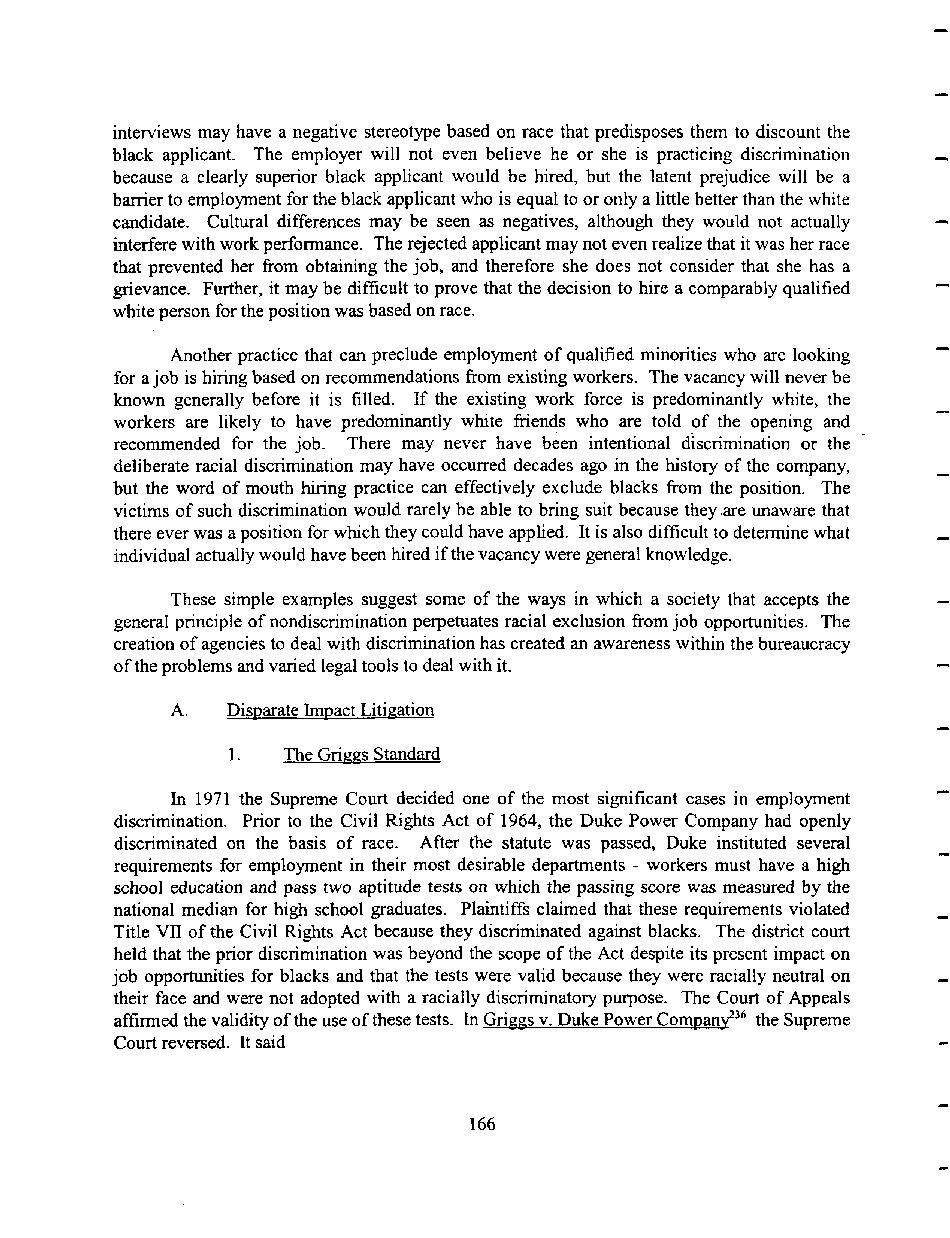|
interviews may have a negative stereotype based on race that predisposes them to discount the
black applicant. The employer will not even believe he or she is practicing discrimination
because a clearly superior black applicant would be hired, but the latent prejudice will be a
barrier to employment for the black applicant who is equal to or only a little better than the white
candidate. Cultural differences may be seen as negatives, although they would not actually
interfere with work performance. The rejected applicant may not even realize that it was her race
that prevented her from obtaining the job, and therefore she does not consider that she has a
grievance. Further, it may be difficult to prove that the decision to hire a comparably qualified
white person for the position was based on race.
Another practice that can preclude employment of qualified minorities who are looking
for a job is hiring based on recommendations from existing workers. The vacancy will never be
known generally before it is filled. If the existing work force is predominantly white, the
workers are likely to have predominantly white friends who are told of the opening and
recommended for the job. There may never have been intentional discrimination or the
deliberate racial discrimination may have occurred decades ago in the history of the company,
but the word of mouth hiring practice can effectively exclude blacks from the position. The
victims of such discrimination would rarely be able to bring suit because they .are unaware that
there ever was a position for which they could have applied. It is also difficult to determine what
individual actually would have been hired if the vacancy were general knowledge.
These simple examples suggest some of the ways in which a society that accepts the
general principle of nondiscrimination perpetuates racial exclusion from job opportunities. The
creation of agencies to deal with discrimination has created an awareness within the bureaucracy
of the problems and varied legal tools to deal with it.
A. Disparate Impact Litigation
1. The Griggs Standard
In 1971 the Supreme Court decided one of the most significant cases in employment
discrimination. Prior to the Civil Rights Act of 1964, the Duke Power Company had openly
discriminated on the basis of race. After the statute was passed, Duke instituted several
requirements for employment in their most desirable departments - workers must have a high
school education and pass two aptitude tests on which the passing score was measured by the
national median for high school graduates. Plaintiffs claimed that these requirements violated
Title VII of the Civil Rights Act because they discriminated against blacks. The district court
held that the prior discrimination was beyond the scope of the Act despite its present impact on
job opportunities for blacks and that the tests were valid because they were racially neutral on
their face and were not adopted with a racially discriminatory purpose. The Court of Appeals
affirmed the validity of the use of these tests, hi Griggs v. Duke Power Company236 the Supreme
Court reversed. It said
166
�
|

